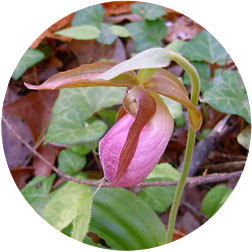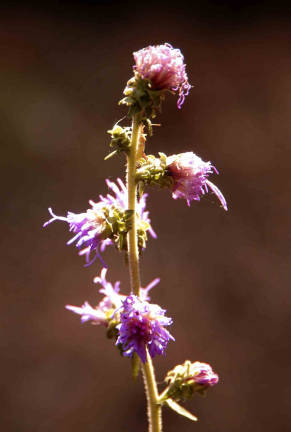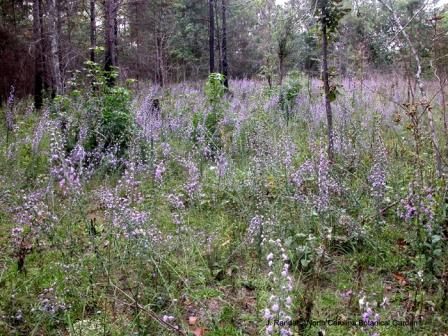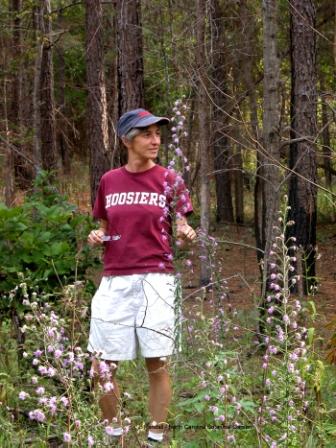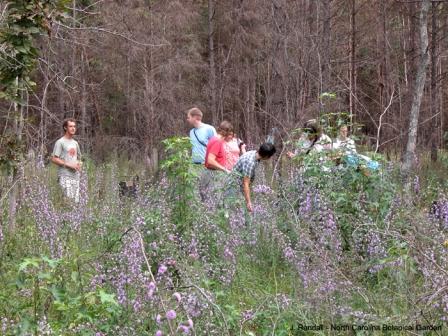Plant Portrait
Scientific Name: |
Liatris squarrulosa |
|---|---|
Common Name: |
Southern Blazing Star |
Native/Alien: |
Native |
Type: |
Perennial |
Size: |
to 6 ft |
Light: |
Sun |
Soil Moisture: |
Sub-xeric / Xeric (*) |
Bloom Time: |
Fall |
|
Closeup of Blooms
|
|
|
Field of Blooming Plants
near Raleigh-Durham, late September 2005
|
|
|
Tall Flower Stalks
near Raleigh-Durham, late September 2005
|
|
|
Field Trip Members amongst blooming Liatris during a field trip
near Raleigh-Durham, late September 2005
|
|
Notes: |
1998 North Carolina Wildflower of the Year
Southern blazing star has many garden worthy attributes, yet is seldom found in the horticultural trade. It develops an unbranched, upright flower stalk that grows to six feet - unusually tall for a blazing star. The rose-purple flowers, arranged in tight heads, appear in the fall. Mature plants have a strong vertical effect which provides a distinctive element in the garden. Although easily grown in any average sunny site, southern blazing star is actually very well adapted to dry sunny sites. In the Carolinas, the secret to getting southern blazing star (or any so-called drought-tolerant plant) established in a difficult site is to plant in the fall. This gives new roots a chance to become established in the relatively stress-free conditions of our fall and early winter. Southern blazing star is a member of the sunflower family of plants, Asteraceae. Each bloom head is composed of many individual flowers. Instead of sporting the petals or ray flowers we usually associate with sunflowers or daisies, the flowers of this plant are composed entirely of disk flowers like those located in the center of a sunflower. The sequence of bloom is also interesting. Most plants that form a spike open from the bottom up, but the blooms of blazing stars open from the top down, creating a dramatic effect in the perennial garden. Southern blazing star combines well with New England aster (Aster novaeangliae), Helen's flower (Helenium autumnale), seashore mallow (Kostelelzkya virginica), as well as many other fall-blooming perennials. |
Links: |
USDA PLANTS Database Record |
